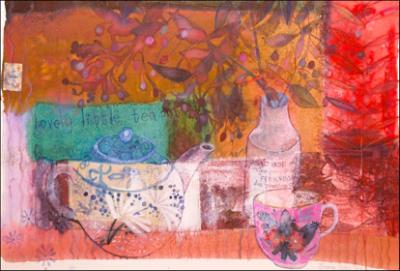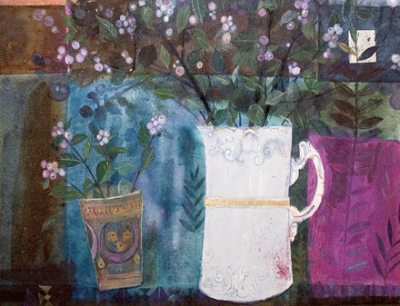Watercolour Flowers Dates TBA £27 per person Course limited to 12 people only Pay online using the button below, or download Booking Form HERE *** More dates coming soon *** This four hour workshop is for those that have had some experience of painting in watercolours and would like to focus specifically on techniques to paint flowers. Learning Outcomes
Some basic experience of watercolour painting needed. Materials Needed: Please bring: A basic watercolour kit: A round watercolour brush (size 7 or above) a set of watercolour paints, 2 jars, kitchen towel & watercolour paper (at least A4 size and 300gsm weight or more) extra materials including paints (More information HERE) and paper will be available to buy at cost. Please bring or buy your own lunch. Tea and coffe are provided. Course Content: Part one Use sheets of Bockingford water-colour paper. We don't need to stretch our paper, if there is time I'll demonstrate how to stretch a finished dry painting. Flowers come in such a huge range of sizes, colours, degrees of complexity, some plain, some incredibly patterned with stripes, spots, speckles, veins, etc. Think about the lines you are painting; straight ones require a different way of holding and manipulating the paint on the brush from painting wavy curves, or circular lines. 1.Practice drawing with the brush with a very dilute water-colour. Manipulating watery paint on a fine brush is hard, your brush is capable of a range of marks and strokes but drawing with it confidently is the first stage in mastering the medium, especially for something as complex as flower painting. 2. Draw with water first, then introduce pigment/colour into water, 3. Draw with paint first, then introducing water into paint Think carefully about size of brush for each task, always keep a wet brush, unless you are removing surplus paint form a specific area. 4. Introduce salt, brush, use toothbrushes to add texture. 5. Adding details and/or layers of colour to dry layers of paint 6. rectifying errors: have you too much colour? Wrong colour? Or have your colours blurred into each other? blobs or spills of colour where you don't want it? I'll show you how you can use clean water and / or paper towel or paper tissue to gently rectify any errors, not always successful, but sometimes mistakes can be serendipitous! 6.Use of colour. I don't often use paint straight form tube, I prefer to create a "FAMILY' of collars to create a harmonious palette. Regarding masking fluid, personally I'm not keen, I have used it but tend s to be a bit haphazard! It is ok for small freckling, but works better on some paper than others. if you use it you must wait for the paint to dry completely before using a putty rubber to gently remove. Part two Try to practice some of techniques we tried out at the beginning of this morning's workshop! 1. I find drawing in detail with a pencil first can lack spontaneity, so I like to use a 2B pencil to very softly and faintly just 'MAP' out areas and positions of flowers first. These pencil marks can be erased ay a later stage with a putty rubber, or you can leave them to form part of the finished painting. Your flowers wont move much throughout the day, and nobody will know if your drawing isn't perfect, this is not like a portrait where accuracy is essential! Sometimes if I'm feeling bold I just go straight in with out any preparation at all. 2.Select 'key parts'. Key points for your composition will be where the main flower heads are, where the flowers' centres or focal points are, where flowers join stems, position of leaves and stems. 3. Look carefully; do any overlap- get the big 'key players 'in the foreground first- then infill with other background forms afterwards. 4.Think about including other key elements in your painting too. For me it will be the background, the jugs or vases, something to counterbalance the ephemeral quality of the flowers, a pattern on a jug or vase, maybe a patterned fabric, It is the juxtaposition of these elements which excite me, and create a MOOD or atmosphere, so the painting become more then just a botanical study of an individual flower or plant. At the end of the session, we will look at each other’s work, maybe discuss which techniques you liked and why. Might you be tempted to try a larger scale painting next time?
Joanna Allen: |
   42.jpg)  |